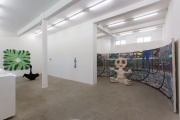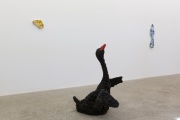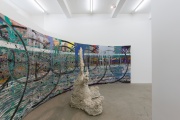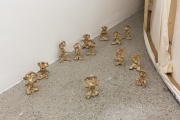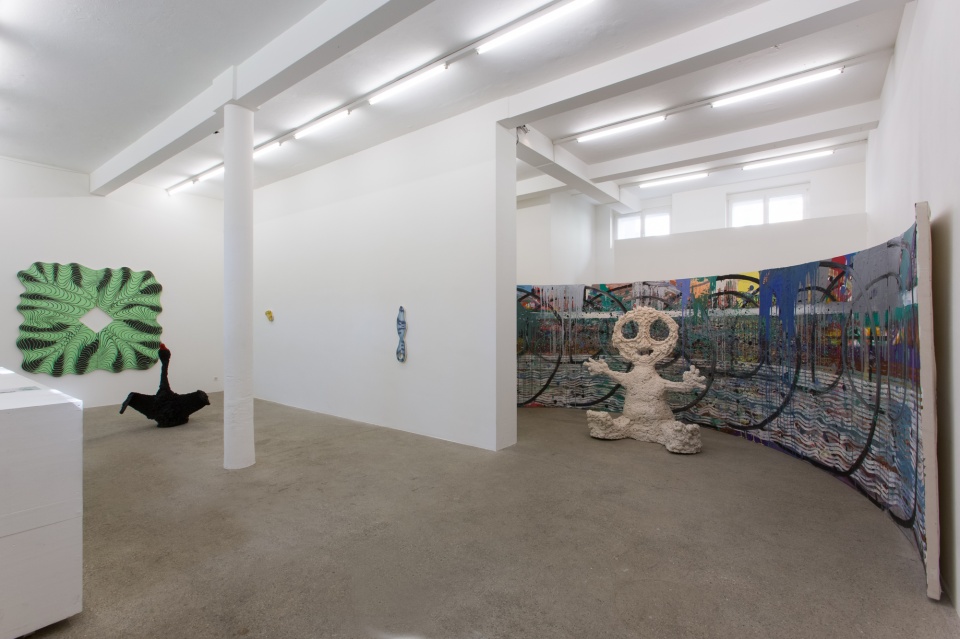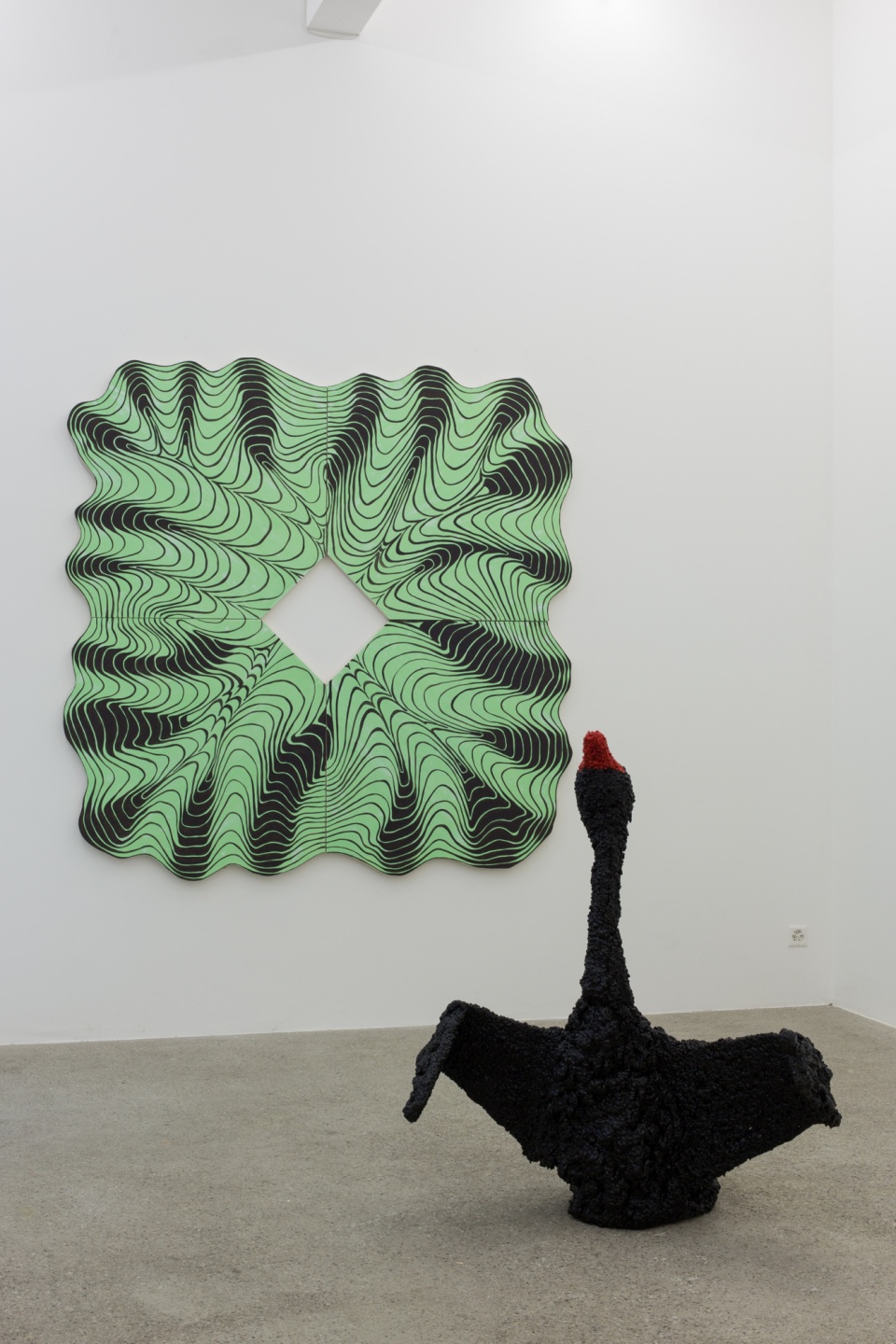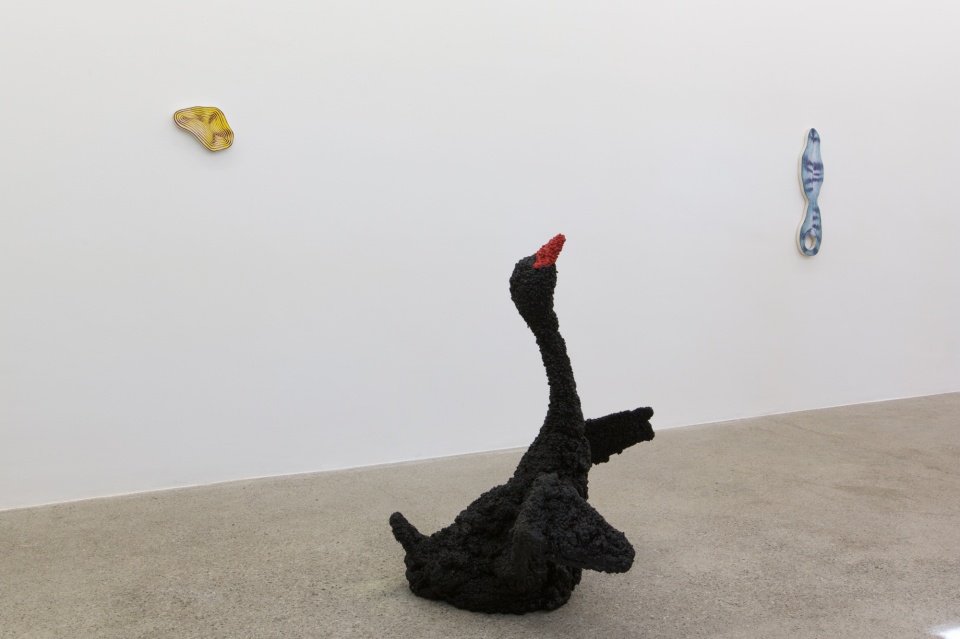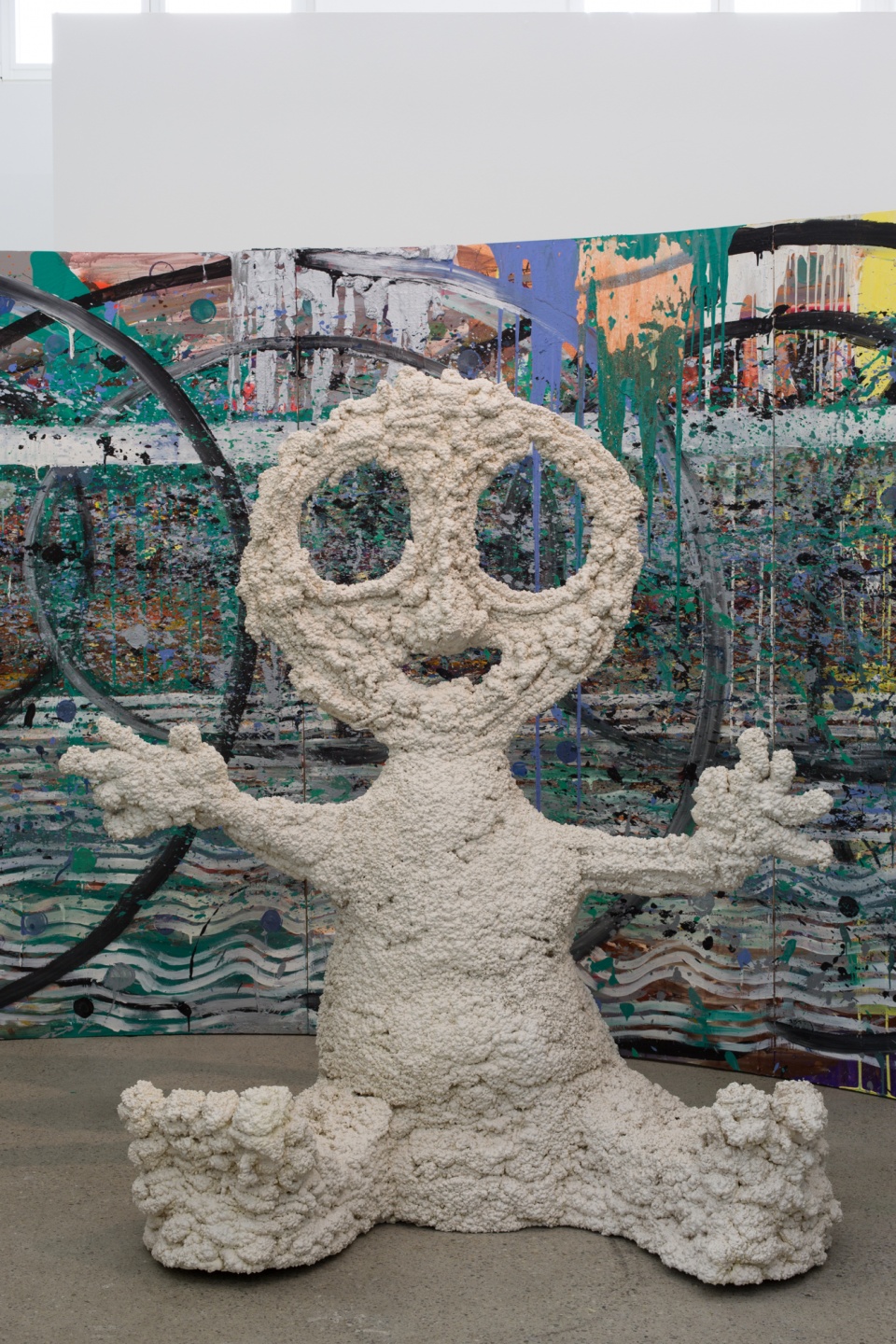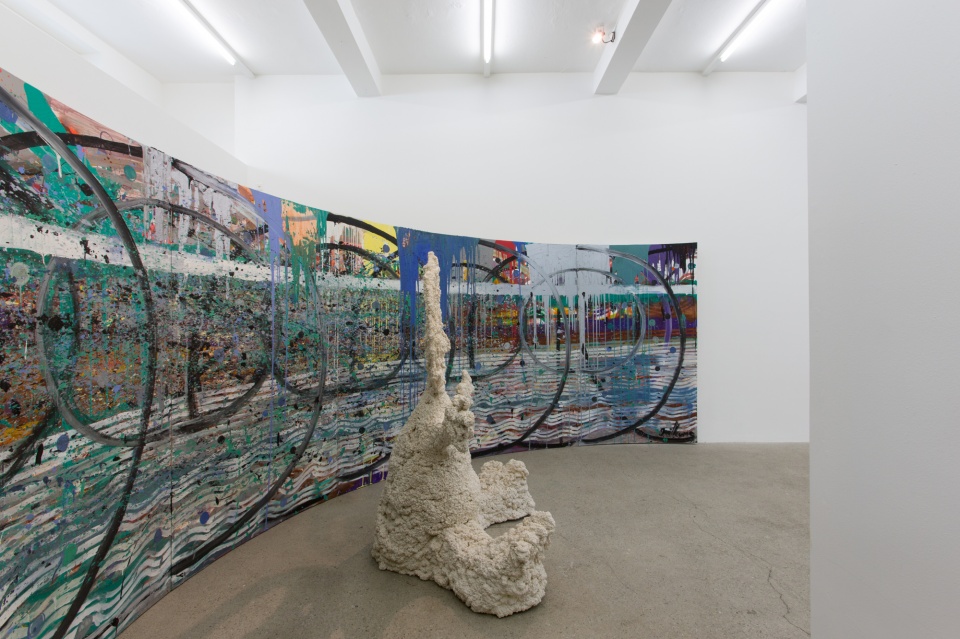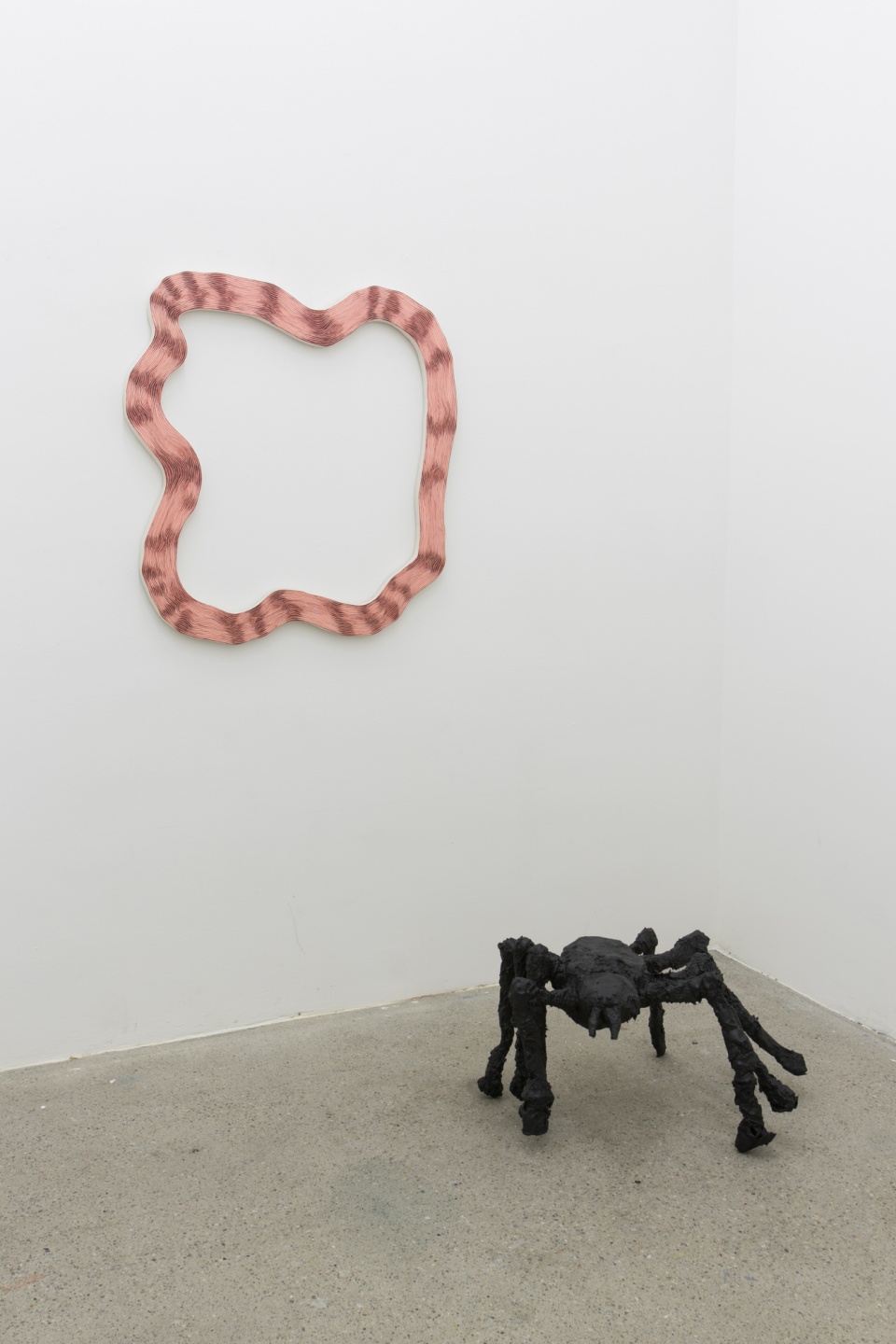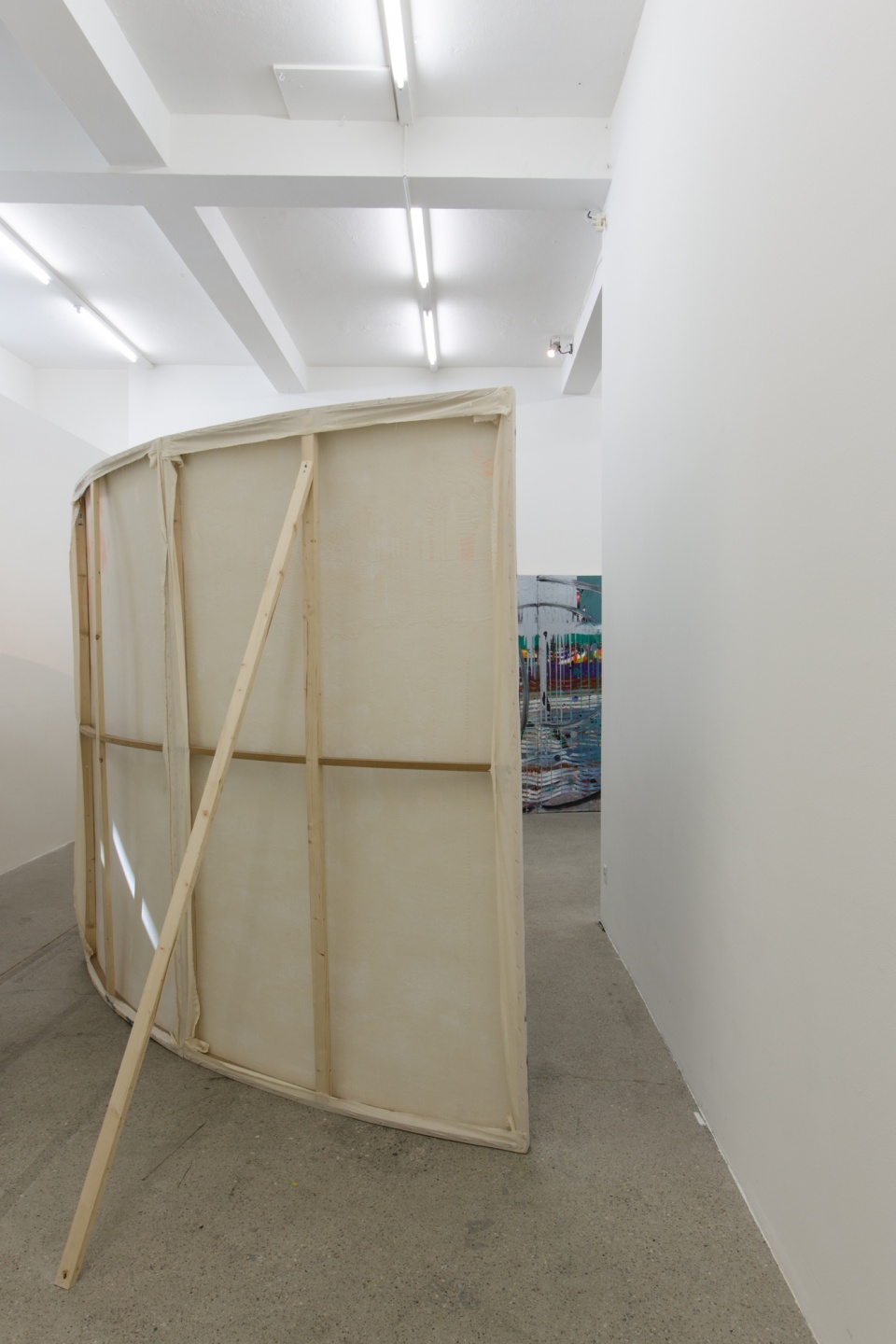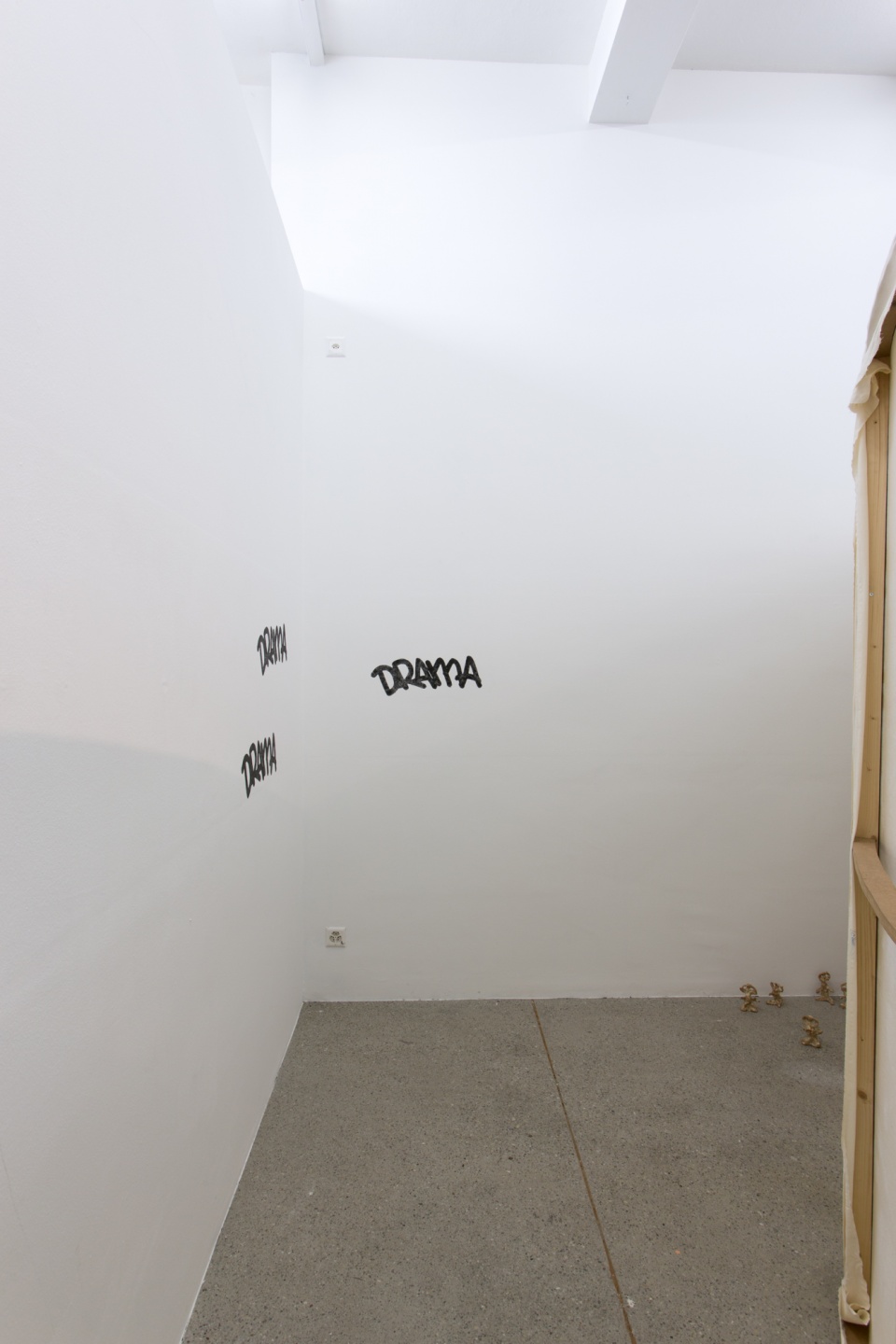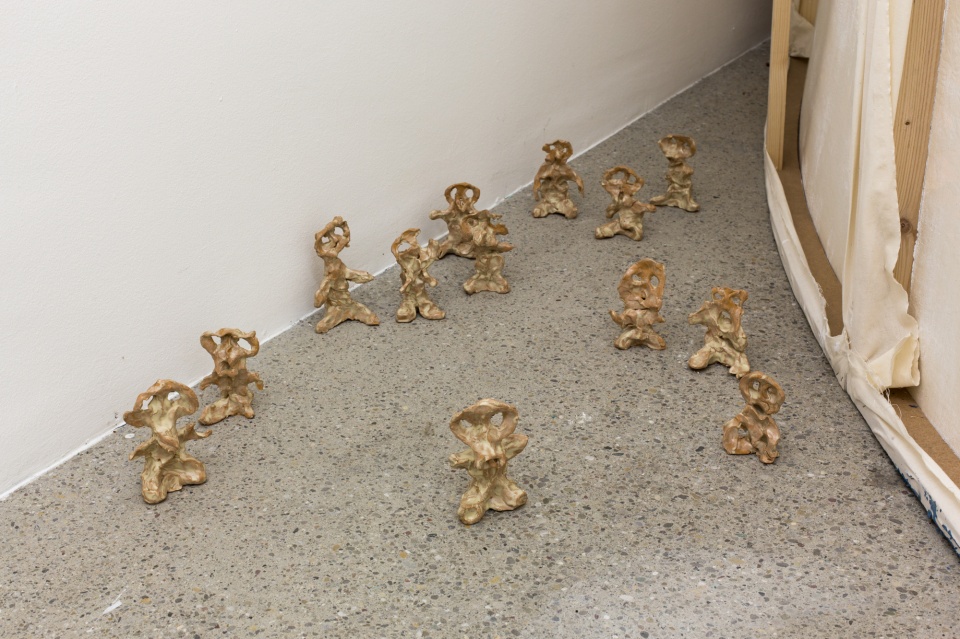Guillaume Pilet, 25 August 2016 – 29 October 2016
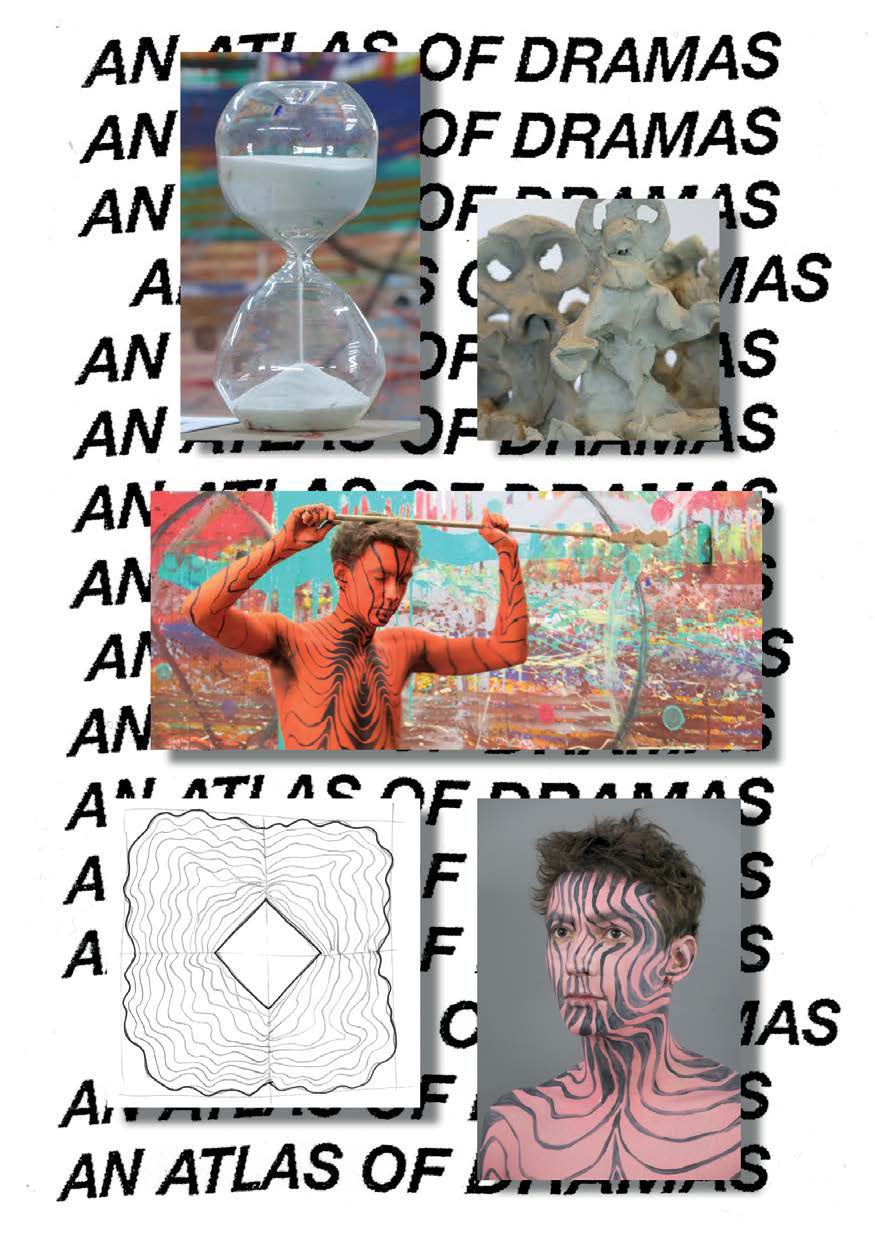
AN ATLAS OF DRAMAS
SEASON OPENING WEDNESDAY, AUGUST 24, 6 – 9 PM
The title of Guillaume Pilet’s third exhibition at Rotwand Gallery, “An Atlas of Dramas”, immediately raises expectations, with its promise of an exhaustive topography of the dramatic spectrum. But what exactly should one expect: a map of Tendre, an inventory of narrative forms or a cartography of tragedies? Some excellent art critics have already discussed Guillaume Pilet’s work. According to them, he is a “mimetic” artist, who at the same time “stages his own, distinct work”. Both apprentice and critic of his own productions, he “questions and incorporates a variety of different genres and origins”. His utilization of origin narratives, they argue, reveals the “fictional” nature of these theoretical discourses.
His previous exhibitions at Rotwand all had a different thematic focus, such as stylistic eclecticism (2008-2011), “La Mesure Harmonique” (2013-) and the poetics of primatology “Learning from aping” (2012-2014). His latest project, which consists of an ensemble of forms derived from the human scale, combining painting and sculpture, ends with a mural painting, featuring the word “Drama”, the exhibition’s leitmotif. Here Guillaume Pilet’s incisive performance art is replaced by dramaturgy. The big painting is based on a 6-days performance he did at the Centre culturel suisse in Paris last autumn and constitutes a veritable stage setting for sculptures that emulate real characters: an archaic figure, a spider, a swan. The artist is even working on a sketch for an opera, an art form that combines music, song and theatre.
Opera, however, is only one of the keys to this project, whose title may be explained with the help of another important reference. Guillaume Pilet’s work uses the technique of “punching”, this paradoxical act, whereby you puncture or pierce something in order to validate it; the artist, for instance, uses Picabia’s dots to perforate the illusory depth of a piece of tie & dye. Beyond this principle of appropriation, however, Pilet’s art of familiarity and citation is already one step ahead in its quest for a phantom poetics. He is well acquainted with the works of Aby Warburg, and has created several portraits and busts of the famous historian since the start of his career in 2007. Warburg called his Atlas Mnemosyne (1927-1929) “a ghost story for adults”: this history of formalized memories is one of disappearance and re-emergence, like so many historical dramas and tragic roles that haunt our works and us. Concerning the theme of his exhibition, Guillaume Pilet rightly observes: “Every human being is like an atlas of dramas”.
Julien Fronsacq, Curator Palais de Tokyo (Translation Kevin Kennedy)

